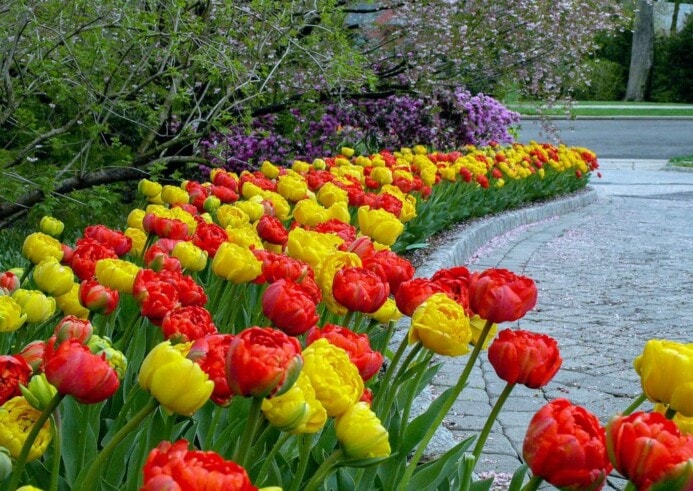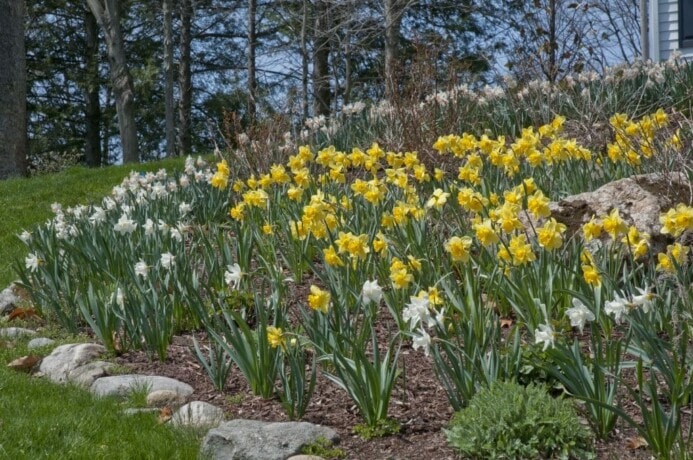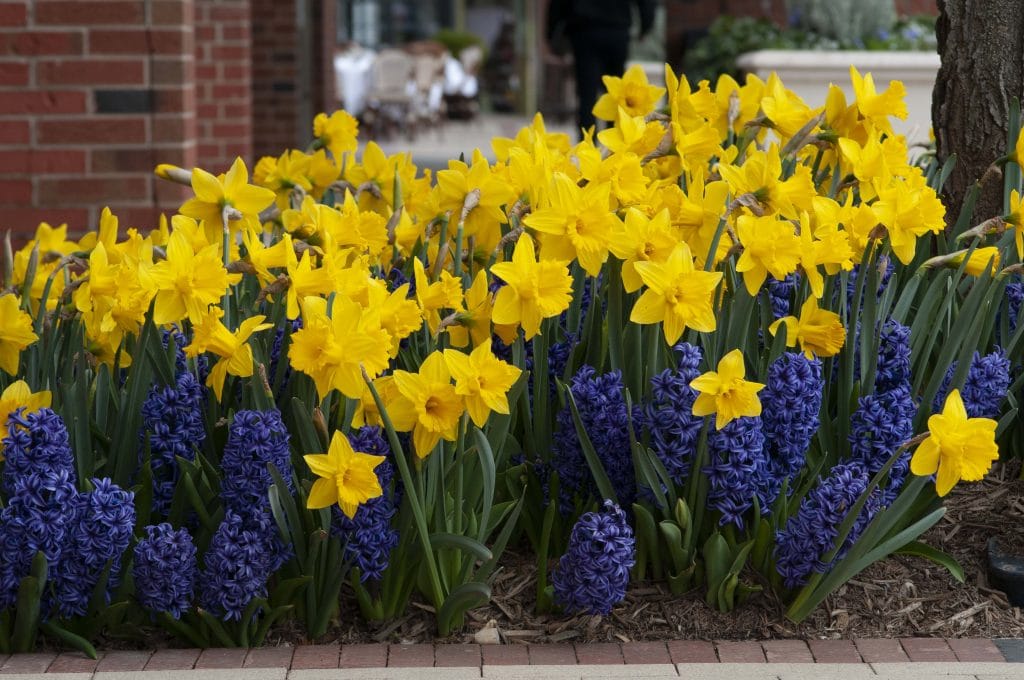Daffodil and Hyacinth Combination. Credit: Colorblends.com
Remember how you feel when you see the first spring flowers in bloom after a long, cold winter? Especially during these crazy pandemic times, why not bring lots of brightness to your Montgomery, Chester and Berks Counties yard this spring.
When to Plant
Spring bulbs can be planted until the soil freezes, so October and November are perfect planting months. It’s never great to plant too early, and you can usually get away with planting a bit late. As long as you can work the soil, you’re usually good. Bulbs need cool soil to make roots before the onset of winter.
Planting Basics
Just dig a hole, drop in the bulb (pointed ends should be facing up), cover it up, and water. Then forget about them. It’s about the easiest kind of garden to grow. Most bulbs like 6-8 hours of sun even when the trees leaf out. Read the label on your bulbs for recommended planting depth. In general, plant 8” deep for large bulbs and 5” deep for small ones.
It’s ok to plant bulbs in large quantities for massive stunning displays.
After blooming, cut back the flower stalks but leave the leaves in order to allow the bulb to store enough energy for the next growing season.
Want an impressive showing? This Fall: Plant 100 Tulip Bulbs in 30 Minutes. Colorblends has perfected this technique and it seems quite easy! ( https://www.colorblends.com/how-to-plant-100-bulbs-in-30-minutes/ )
Another great idea is to simply plant some spring bulbs in pots in addition to planting in the landscape. That way you can put a pot on your patio or front porch as well.
Daffodil Planting
Daffodils will keep bloom year after year if you follow some basic rules. Plant them where they will get at least 6 hours of direct sunlight. They like soil that drains well and avoid planting where water stands after a heavy rain. Fertilize very lightly with a low-nitrogen fertilizer as shoots emerge in early spring. And after daffodils flower, wait at least 8 weeks until the leaves turn yellow before cutting them. Never tie or braid foliage. Just remember, the leaves become next year’s flowers.

Tulips bring a splash of color mixed into landscaping. Credit: Colorblends.com
Deer and Rodent Resistant Bulbs
Tulips and crocus plantings taste delicious to deer and rodents but there are bulbs critters don’t like, chief among them daffodils, snowflakes, and snowdrops. Alliums are also another bulb that deer usually avoid.
Facts to Consider
Buy in larger quantities. Planting a few bulbs here or there will not give you the impact you might want. Plant at least 50 of one specimen, whether it’s by your patio or walkway.
Naturalizing daffodils multiply. All Narcissus are good but some Narcissus actually naturalize. Naturalizing plants reproduce new bulbs underground, thickening over time and producing more flowers. And you can’t beat the price.

Naturalized Daffodils. Credit: Colorblends.com
Need Help?
Want a pop of color next spring but lack the time to make it happen? Call Whitehouse Landscaping at 484-300-4290 and we can prepare a bed if necessary and give you that spring garden you’ve always wished for!

